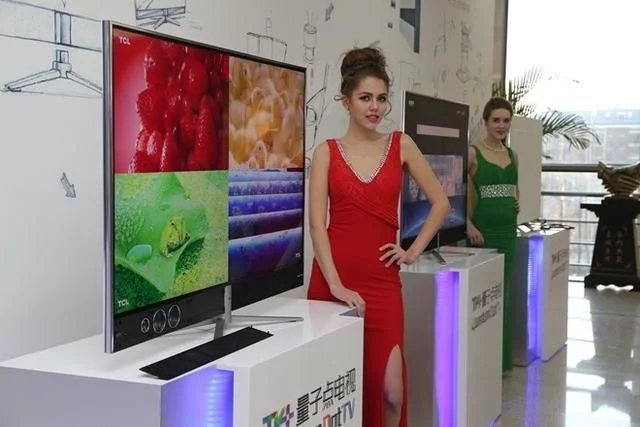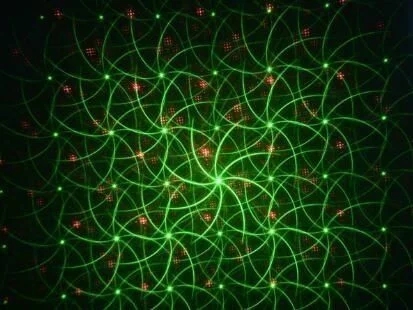
Privacy statement: Your privacy is very important to Us. Our company promises not to disclose your personal information to any external company with out your explicit permission.
The battle for a new generation of display technology has not stopped, whether it is OLED, QLED technology, or Micro LED, Mini LED technology, are claiming that they are the master of future display technology, it can be seen that before the situation is still completely clear Anyone can stand up and "sworn the sovereignty."
Recently, Ding Jinglong, executive deputy general manager of Innolux, said, “After 10 years, the OLED panel may be withdrawn. The Mini LED panel is an opportunity for Taiwanese manufacturers.” He believes that the mobile OLED panel is currently hot, not too short in a short time. The exit pressure, but the OLED TV panel price is too high, it is expected to be replaced by a lower cost, better quality Mini LED panel.
Ding Jinglong emphasized that Innolux is the first manufacturer in the world to make a miniature organic light-emitting diode (Mini LED) panel driven by a thin film transistor liquid crystal display (TFT-LCD). Not only is the image quality superior to that of an OLED panel, but the manufacturing cost is lower than that of OLED. Panel, so confident that it can replace the market position of OLED panels.
For this series of "crazy words" of Innolux, we don't have to care too much. After all, the first opportunity of OLED technology has fallen into the hands of Samsung. It is hard to get involved in it. It is quite feasible to shout slogans and take the new concept as the gimmick.
Now, how are these display technologies developing? Then take a look at the OFweek display network Xiaobian!
OLED TV
As the current mainstream flexible display technology, OLED has become the most likely display technology to replace the traditional TFT-LCD with its excellent display performance and characteristics.
As a self-luminous display, OLEDs do not have the same liquid crystal molecules as conventional TFT-LCDs. Therefore, substrates commonly used in flexible OLEDs can be better bonded to plastic substrates, including PET, PEN, etc., and metal foil substrates are also used. The other is also an ultra-thin glass substrate, so that the OLED display can realize flexible display functions such as bending.
According to Zhongyikang's comprehensive online and offline data for the May 18th promotion period (4.9-5.6), the retail sales of the color TV market was 3.94 million units, with sales of 12.5 billion yuan, down 12.4% and 26.1% year-on-year respectively. The unfavorable situation of falling prices.
In the context of the sluggish macro environment, the penetration rate of OLED TVs has increased. The penetration rate of online channels and channels has increased by 83% and 100% respectively, the highest growth rate in history and the fastest growing TV category. .

According to data from the OFweek Industry Research Institute, in 2017, China's OLED TV sales reached 120,000 units. Sony, Philips, LG, Skyworth, Konka and other TV manufacturers joined the OLED camp to achieve differentiated sales. In 2018, China's OLED TV as a whole The sales volume will be at least doubled on the basis of 2017.
Currently, more and more machine manufacturers are joining the OLED camp. Since the end of 2017, the OLED camp has expanded to Philips, including Japanese manufacturers such as Sony and Panasonic, Korean manufacturers such as LG Electronics, and 13 major Chinese manufacturers such as Skyworth, Changhong and Konka.
Among domestic manufacturers, Skyworth entered the OLED camp earlier, so it has a certain advantage. It is worth noting that in the second half of this year, two brand manufacturers will join the OLED camp, which is widely considered to be Hisense and Toshiba.
Quantum dot television
As the "second generation" of OLED, QLED TV has a rapid development trend driven by TV giants such as Samsung, TCL, Hisense and Philips.
In 2015, Samsung released SUHD TV, which announced the horn of QLED TV. In 2016, it acquired QD Vision, a technology company known as the “father of quantum dot display”, to further improve the development of QLED; in 2017, Samsung’s first QLED The flagship TV - Q8C was born. Since then, Samsung has officially embarked on the road of QLED.
In addition to Samsung, the domestic giant crocodile TCL is also the world's first to study and promote quantum dot display technology, so it has absolute right to speak on this advanced display technology. Since the launch of the first product equipped with quantum dot technology in 2014, it has been deeply rooted in this; from the world's first QUHD TV quantum dot TV X1 in early 2016, to the X5 announced this year, TCL's QLED layout is becoming more and more rapid.
At present, TCL has invested billions of dollars in quantum dot technology. Nowadays, it is using the existing OLED materials to practice printing technology, and gradually realize the application of quantum dot technology, and plans to realize the commercialization of quantum dot technology for five years. .
Hisense, another way, played independently and developed its own ULED TV. Hisense Tianyi series ULED super-quality TV sets the advantages of quantum dot technology and becomes a representative product of LCD TV. It is also another milestone product of Hisense to promote the upgrading of liquid crystal display technology. It is reported that Hisense's new generation of quantum dot display products will be officially launched in 2019, and will continue to introduce higher quality ULED TV products.

In 2017, although the quantum dot display (QLED) market declined, the number of global sales decreased from 4.42 million in 2016 to 2 million in 2017, a decrease of 42%. In the same period, the shipment of quantum dot materials decreased from 3.11 tons. It is 1.9 tons, with 61% remaining. However, the Japanese market research institute Yano Economic Research Institute pointed out that the market will change in 2018, whether it is quantum dot materials or display panel shipments, will exceed the 2016 level, and will further increase in 2019.
The Yano Economic Research Institute pointed out that the emergence and mass production of low-cadmium and cadmium-free quantum dot materials, as well as the price reduction of liquid crystal panel materials that can be used in quantum dot panels, can change the current situation that is not conducive to quantum dot display technology in 2018. More manufacturers are willing to join the quantum dot material and quantum dot display panel production market, which has become a factor driving the expansion of the 2018 quantum dot display panel.
Moreover, the quantum dot of the emerging display technology, the technology growth potential is still large, the new glass light guide plate design, the new protective film processing or the structure without the protective film, all help to reduce the cost of the quantum dot display panel, increase the quantum dot display The size caters to the trend of big screen TVs. Micro LED
According to relevant survey data, the global market value of Micro LED display will reach 22.9 million US dollars in 2018. Allied Market Research expects the Micro LED display market to reach $1,945.6 million in 2025. This also means that from 2018 to 2025, the market's compound annual growth rate will reach 89.2%.
Major manufacturers in the Micro LED market include Apple, Samsung, Sony, LG Display, Oculus, Play Nitride, VueReal, eLUX, Rohinni LLC and Aledia.
At CES 2018, Samsung exhibited the world's first modular TV using Micro LED display technology, which is expected to be officially shipped in the third quarter of 2018. At the same time, Samsung will launch the Micro LED factory in Vietnam in July, becoming the world's first company to successfully mass produce Micro LED TVs. The LED chips are provided by Sanan Optoelectronics.
LG and Apple are also closely following. According to Business Korea, LG Vice Chairman has requested to launch a Micro LED TV larger than Samsung before September this year. The industry is rumored that Apple will also be equipped with Micro LEDs on this year's Apple Watch 4.
On the Chinese manufacturer side, Sanan Optoelectronics said that Micro LED will be the focus of the company's development, and they began to layout a year or two ago. BOE also said that the company has carried out relevant research and made some progress. Taiwanese manufacturers have been advancing the development of Micro LEDs and hope to be able to overtake. AU Optronics has taken the lead in launching the world's highest resolution active 8-inch Micro LED display technology. Hon Hai Group invested in the US Micro LED practitioner eLux, and has successively wooed Sharp, Innolux and other manufacturers.

Although the industry believes that the timing of Micro LED TV production is not yet mature, and even some manufacturers doubt the advantages of MicroLED display technology, Samsung decided to promote Micro LED TV into the high-end market in advance, prompting Micro LED technology to quickly join the global brand factory marketing strategy from the research and development stage. It is still unknown whether the Micro LED TV can play the role of Samsung's reversal of the firefighting team, but will open a new page of display technology history.
Mini LED
As a transition technology of Micro LED, Mini LED liquid crystal molecules are relatively large and relatively easy to manufacture. The LCD panel with Mini LED backlight is just a replacement for the existing LED backlight with a smaller Mini LED, so the production time will be much faster than the Micro LED panel.
According to the latest report, it is estimated that by 2022, the market value of Micro LED and Mini LED will reach 1.38 billion US dollars.
At present, chip makers such as Jingdian, Longda, Sanan and Huacan, and other panel makers such as AUO and Innolux, such as Yiguang, Rongchuang, Hongqi and Seoul Semiconductor, are optimistic about the prospects of Mini LED and increase related Product development.
Hong Jinyang, the new chairman of Innolux, said that large-size TVs equipped with AM Mini LED technology are expected to be launched in the second quarter of 2019, and automotive products are expected to be launched in 2020.
Previously, it was reported that Jingdian Mini LED products will be shipped in small quantities in the second half of the year and will be supplied to Huawei. Jingdian has said that the production of Mini LED chips for smartphones and TVs will start in the second half of 2018, and the Mini LED chips for high-end gaming displays may start production in the second half of 2018.

As a transition product of Micro LED, Mini LED has advantages in cost and mass production than OLED, and it is a predecessor for Micro LED.
From a cost perspective, the cost of a Mini LED module is lower than that of an OLED. For example, the TFT LCD TV panel with Mini LED backlight design is only 60% to 80% of the OLED TV panel, but the brightness and image quality are similar to those of OLED.
From the performance point of view, Mini LED has the characteristics of power saving and high efficiency, saturation and high dynamic range are better than OLED, and it is 50% less than OLED. With special-shaped cutting characteristics, it can be used to realize curved surface backlight with soft panel, and its thickness is close to OLED.
From the point of view of mass production, compared with Micro LED, Mini LED technology is less difficult, easy to mass production, and high yield, and can use most of the existing production equipment for mass production.

ΗΛΕΚΤΡΟΝΙΚΗ ΔΙΕΥΘΥΝΣΗ σε αυτόν τον προμηθευτή
Whatsapp: 8613267107880
Διεύθυνση: Room 201,No.1,Dayang Second Road,Yulu community,Yutang street,Guangming District,Shenzhen,Guangdong, Shenzhen, Guangdong China
Δικτυακός τόπος: https://gr.rgbdancing.com

Privacy statement: Your privacy is very important to Us. Our company promises not to disclose your personal information to any external company with out your explicit permission.

Fill in more information so that we can get in touch with you faster
Privacy statement: Your privacy is very important to Us. Our company promises not to disclose your personal information to any external company with out your explicit permission.